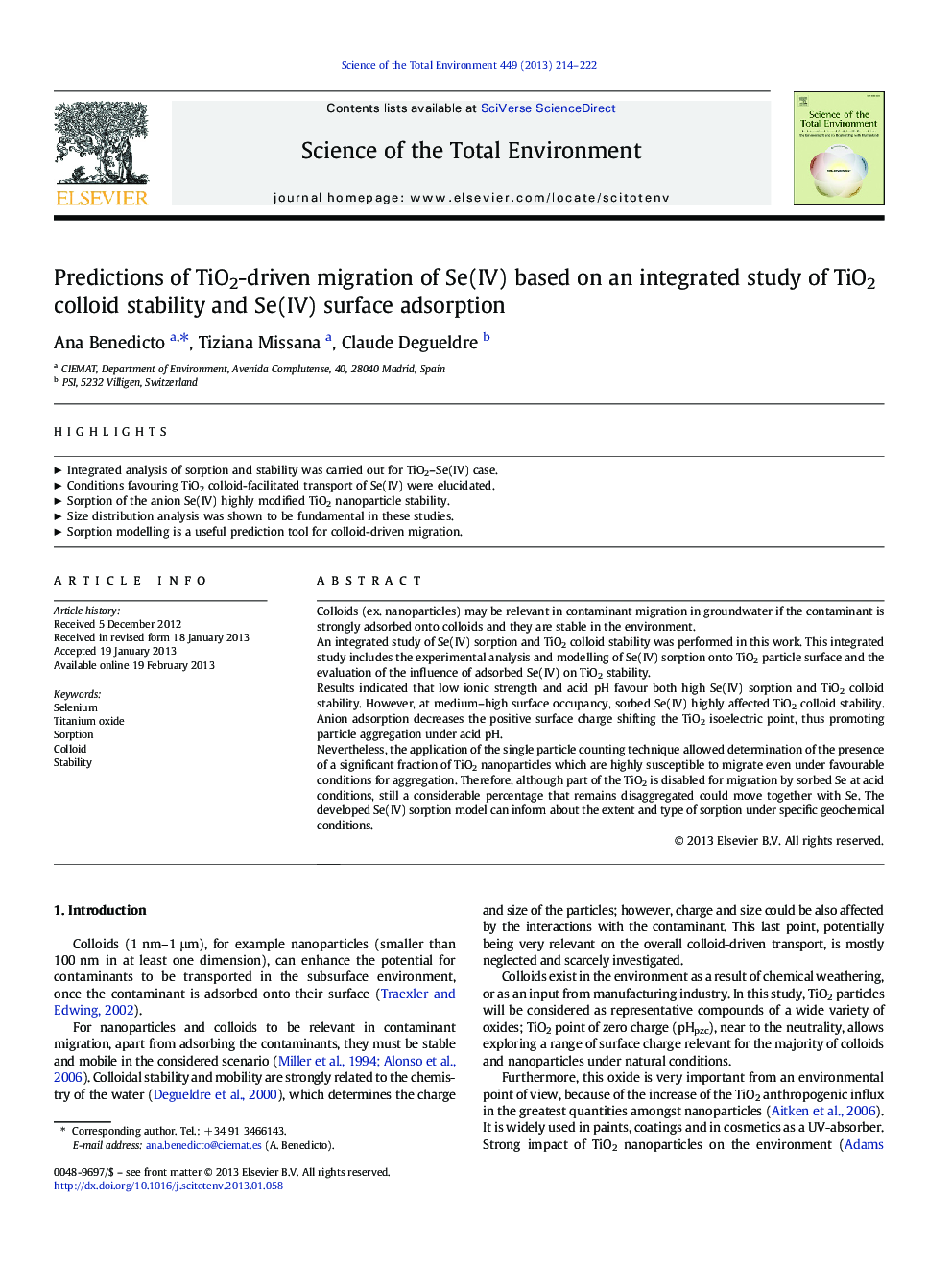| Article ID | Journal | Published Year | Pages | File Type |
|---|---|---|---|---|
| 4428858 | Science of The Total Environment | 2013 | 9 Pages |
Colloids (ex. nanoparticles) may be relevant in contaminant migration in groundwater if the contaminant is strongly adsorbed onto colloids and they are stable in the environment.An integrated study of Se(IV) sorption and TiO2 colloid stability was performed in this work. This integrated study includes the experimental analysis and modelling of Se(IV) sorption onto TiO2 particle surface and the evaluation of the influence of adsorbed Se(IV) on TiO2 stability.Results indicated that low ionic strength and acid pH favour both high Se(IV) sorption and TiO2 colloid stability. However, at medium–high surface occupancy, sorbed Se(IV) highly affected TiO2 colloid stability. Anion adsorption decreases the positive surface charge shifting the TiO2 isoelectric point, thus promoting particle aggregation under acid pH.Nevertheless, the application of the single particle counting technique allowed determination of the presence of a significant fraction of TiO2 nanoparticles which are highly susceptible to migrate even under favourable conditions for aggregation. Therefore, although part of the TiO2 is disabled for migration by sorbed Se at acid conditions, still a considerable percentage that remains disaggregated could move together with Se. The developed Se(IV) sorption model can inform about the extent and type of sorption under specific geochemical conditions.
► Integrated analysis of sorption and stability was carried out for TiO2–Se(IV) case. ► Conditions favouring TiO2 colloid-facilitated transport of Se(IV) were elucidated. ► Sorption of the anion Se(IV) highly modified TiO2 nanoparticle stability. ► Size distribution analysis was shown to be fundamental in these studies. ► Sorption modelling is a useful prediction tool for colloid-driven migration.
